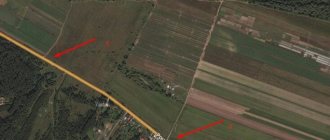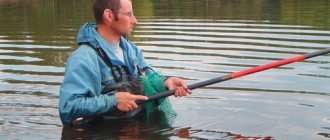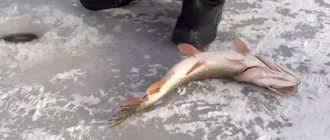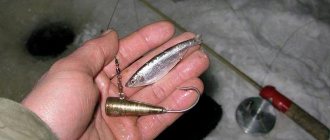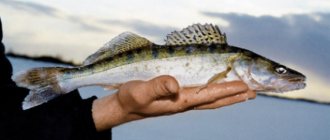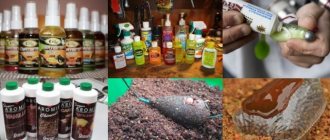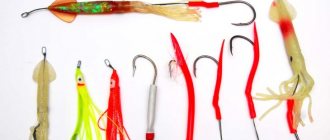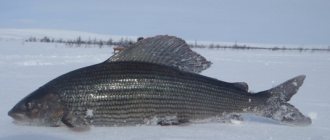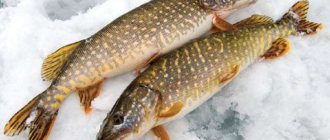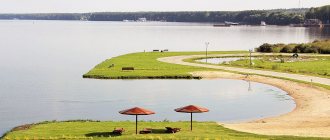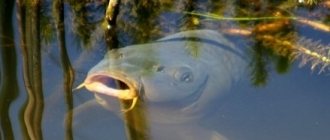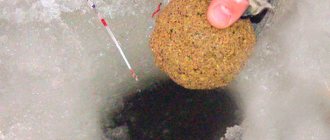Don is a river in the southwest of the Russian Federation. The river flows through the following regions: Voronezh, Lipetsk, Rostov, Tula and Volgograd regions. The origin of the name is very ancient and goes back to the Aryan languages, where variants of the word “don” meant dew, water, etc. In the past, Greek scholars and various Western travelers called the Tanais River Girtis. The Turkic tribes called the river Ten. The river has a length of 1,670 km, with a drainage basin area of 422 thousand km². The sources are located on the Central Russian Upland, in its northern part. In the past, various bodies of water were considered to be the beginning of the river. Currently, the source is called the Urvanka stream. In Novomoskovsk there was a memorial sign and an architectural complex - “Source of the Don”. The Volga-Don Canal was built at the point of maximum convergence of the Volga and Don.
Most of the river flows in the forest-steppe and steppe zones. More than 5,000 tributaries flow into the river, but for the most part, the river is considered low-water. The Don River is a typical lowland river, the bed slope is slight. The river has a slow flow, and the morphological features of the banks and bed are quite similar throughout its entire length. However, the river is divided into three sections: upper, middle and lower reaches. The upstream is considered to be the section up to the Tikhaya Sosna River. Here the river valley is narrow and winding. The riverbed is replete with small riffles. In the middle reaches the valley widens somewhat. The lower section begins near the city of Kalach-on-Don, not far from the Tsimlyansk Reservoir. At Kalach-on-Don, the river's floodplain is greatly narrowed due to the spurs of the Central Russian and Volga uplands approaching the riverbed. After the Tsimlyansk reservoir and dam, the river expands greatly, spreading across a vast floodplain, breaking into branches and channels, and, ultimately, forming the Don delta. The right bank is higher and steeper. The bottom is, in most cases, sandy. The width of the valley in the lower reaches can reach up to 25 km. The river delta begins below Rostov-on-Don (area - 340 km2) and flows into the Taganrog Bay of the Sea of Azov through numerous branches. The entire river basin is located in the forest-steppe and steppe zone, which explains the low water content of the reservoir compared to rivers flowing to the north. Snow feeding predominates. Along the river, climatic conditions change in a north-easterly direction, which affects the amount of precipitation and its distribution in the basin. The highest water level in the river is during the spring flood. The amplitude of water fluctuations can reach 13 m. Due to geographical and climatic features, two peaks of spring floods are possible, when melt water first comes from the middle and lower reaches, and then water comes from the upper reaches. In the lower reaches, in spring, the Don overflows heavily; autumn or summer floods are rare or insignificant. Freeze-up on the river varies in timing and intensity. In the upper reaches - about 4 months, and in the lower reaches, about one month. The anthropogenic impact on the Don River is very high and often irreversible. A huge amount of water is consumed when used for the needs of the population, irrigation and other things. Water is used both in industry and in agriculture, sampling occurs from the main channel, reservoir, and large tributaries. In connection with the existence of the Volga-Don Canal, a mutual influence of river flows occurred, in which new species of organisms invaded from the Black Sea Basin to the Caspian Sea and vice versa. This negatively affected the species composition of not only fish, for example, sturgeon, but also the Caspian seal. The technogenic impact on the chemical composition of water, due to the discharge of polluted water, is somewhat “smoothed out” due to self-purification in the lower reaches and in the reservoir. The level of water pollution in the Tsimlyansk reservoir corresponds to “moderately polluted.”
Ichthyology
In the waters of the Don, previously, scientists counted more than 70 species of fish. Currently, due to the deterioration of the ecological situation and the strongest anthropogenic factor, the species, size and quantitative composition of the ichthyofauna has sharply deteriorated. Sturgeon are considered endangered species: beluga, sterlet, sturgeon. The number of catfish has sharply decreased. The sizes of river giants are now, most often, not gigantic at all. However, there are still a lot of fish in the river. Common species include: pike, perch, roach, silver bream, rudd, asp, bream, pike perch, crucian carp, burbot, carp, sabrefish, shemaya, herring and fisherman.
Don fish
According to various sources, there are about 70 species of fish on the Don . Among them there are rare species listed in the Red Book, for example, sturgeon. Therefore, before fishing, it is important to understand what fishing restrictions exist.
Shemaya
The Azov-Black Sea shemaya is very popular on the Don for its lean and tender meat. Due to its taste value, stocks of shemaya in the Don have decreased so much that the fish was listed in the Red Book. However, several years ago the status of the shemaya was changed to “Recovering”, which gives reason for optimism for the future.
Despite the fishing ban, shamaika can be easily bought at the market or served as a dish in a restaurant. In one of the cities of the Rostov region there is even a monument to shamaika. The owner of the establishment erected the monument in front of the entrance to the restaurant after he paid a fine for preparing dishes from shemaya.
Juvenile shemai are easily confused with small schooling fish - bleak. Both species belong to the same genus of bleak. But shemaya has a number of differences:
- greater number of scales along the lateral line - from 60 to 70,
- orange pectoral fins.
Having caught such a fish, it would be wiser to release the catch back, otherwise the fisherman faces an administrative fine and even criminal prosecution.
Pelengas
In recent years, fishing for pelengas (pilengas) on the Don has become a fashionable hobby. The fish belongs to the mullet family and appeared in the local area in the 80s. Pelengas were brought from the Far East and released into the Sea of Azov. The fish has successfully taken root in the Azov-Black Sea basin and in the Don and has become a popular seafood delicacy.
The length of the pelengas reaches one and a half meters, the weight is up to 7 kg. Catching this fish will require some skill from the fisherman. Pelengas is famous for its strength and swiftness; there are cases when fish easily jumped over the set nets.
Previously, catching pelengas on the Don was considered a great success, until fishermen figured out to use the traditional food for this fish - a sea worm - as bait. Not only the pelengas tried the new type of bait; rams and juveniles of other fish actively attacked the sea worms. Therefore, when fishing, you need to carefully choose the place and time of fishing. Optimal time for catching pelengas:
- in the morning - from 7 to 11 o'clock,
- in the evening - from 15 to 18 hours.
A popular place for catching pelengas in Rostov-on-Don is the area of Green Island and Kumzhenskaya Grove.
Herring
Don herring is in many ways a cult fish for the region . Since ancient times, herring has had great commercial importance. And recently, annual festivals began to be held in honor of the herring. The events take place on the basis of one of the coastal Rostov restaurants and the ethnographic museum complex in the village of Pukhlyakovskaya. Guests of the holiday can try dishes from various types of herring, take part in fishing the old fashioned way: using seines and harpoons, and watch a concert of Cossack groups.
The Don Herring Festival is held in mid-May. This time marks the beginning of the herring season. The fish enters the mouth of the Don from the Sea of Azov and moves upstream. In Rostov-on-Don, the most convenient place for catching herring is considered to be the channel between the right bank and Green Island. The banks of the river in this place are connected by a pontoon bridge, which serves as the main fishing platform for herring lovers. When looking for herring in other places on the Don, you should remember that this fish loves fast currents behind sandbanks.
Rybets
Another popular fish from the carp family on the Don is vimba. The weight of the fish can be 3 kg, and the length can be up to half a meter. The fisherman lives in the bottom layers of water, and in the summer it prefers to stay closer to the shore, and in the fall it goes to the depths. Therefore, the optimal time for fishing for fish is spring and summer.
Fishing is good early in the morning. When fished, it resists for a while, but gives up fairly quickly.
Hybrid
This name of the fish causes confusion among many visitors. A little clarification helps to understand that this is what local fishermen call silver crucian carp, or rather, its cross with carp. Thanks to its natural vitality, the hybrid has become one of the most common fish in the Rostov region. Crucian carp is caught almost everywhere, but fishermen are not particularly delighted with the catch of this fish.
In addition to the listed fish, the Rostov region is home to many other species that are common to other regions of Russia. Among them:
- zander,
- perch,
- pike,
- carp,
- carp,
- silver carp,
- roach.
Fishing Features
Despite all the environmental problems and poaching, the Don River is still one of the best fishing rivers in Russia. On the Don, most fishermen will find use for their skills: from floaters to trolling. Many fishermen especially highlight the Tsimlyansk Reservoir. As in the case of the Volga, the species and quantitative composition are influenced by the migration of fish from the Sea of Azov and the presence of dams and reservoirs. The most successful fishing in the Lower Don is during the period when semi-anadromous and anadromous species rise to spawn. Due to the strong anthropogenic influence and fishing pressure, especially when traveling for the first time or with little fishing experience, at present, for successful fishing on the Don, it is worth using the services of experienced fishing organizers. Specialists of tourist and fishing campaigns and owners of bases will certainly help with organizing comfortable rest and leisure, as well as in choosing a fishing spot and gear. Don't forget about the possibilities of winter fishing on the Don.
History of fishing on the Don
The Don River is the main water artery of the Rostov region . Most of the remaining reservoirs are to one degree or another connected with the Don, being either tributaries or parts of a once unified water system.
Since ancient times, Don fish has been an important part of the food supply of the local population. Fishing on the Don is historically even older than arable farming.
The Don Cossacks, the indigenous population of the region, were at one time prohibited from growing grain, so as not to be distracted from military service. The situation with fishing was simpler.
Of course, fishing also required a certain amount of time for making boats and weaving nets, but the Don at that time was so abundant in fish that investments in fishing more than paid off. And during the river flood season, fish were caught, as they say, from the porch of the house.
Over time, large fishing cooperatives appeared on the banks of the Don. Fishing has become an important commercial sector of the economy. The scale of this activity is evidenced by the number of fish processing plants: at the beginning of the 20th century there were about 250 of them.
Under Soviet rule, fish abundance began to decline. The construction of hydraulic engineering units in the Don basin led to disruption of the single river ecosystem. The fish population began to decline seriously. If in former times valuable sturgeon breeds were common in the middle Don region, now this is impossible.
Despite the depletion of fish stocks, fishing in the Rostov region does not lose popularity. You can verify this by passing the bridge across the Don in the Rostov-on-Don area. Dozens of fishing boats fill the river bed as far as the eye can see.
Popular recreation centers: conditions and prices
In the Voronezh region there are many recreation centers for comfortable spending time and fishing. Let's look at the most popular of them.
"Raft"
The recreation center is located on the Don River. Characterized by living directly on the surface of the water, on rafts. You can rent four or eight-person rafts.
The raft contains:
- Tents.
- Brazier.
- Furniture.
- Cutlery.
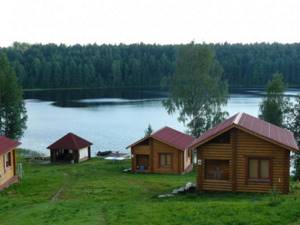
When choosing a holiday here, you are offered:
- Possibility of moving along the river.
- Swimming on sandy shores or directly from a raft.
- Fishing throughout the entire territory and at any time of the day.
- Visit local attractions.
The cost of a four-seater raft is from 9,000 rubles per day, for an eight-seater from 17,200 rubles per day. Reservations from three days.
“Silver Key”
The base is located on the shore of the picturesque Laptevsky pond. Great for families, they offer the following services:
- Organization of fishing, possible independently or with an instructor.
- Boats and catamarans for rent.
- Sports grounds for tennis, billiards, paintball.
- Bathhouse.
- Playground.
- Cafe and banquet hall.
The cost of living in a VIP apartment will cost from 5,000 to 7,000 rubles per day. The apartment is designed to accommodate 6 guests.
A family house for four people will cost you 1,750 rubles per day on weekdays, and 3,500 rubles per day on weekends.
There are separate Fisherman's houses for fishermen; accommodation in such a house for four will cost 2,000 rubles per day on weekdays, and 4,000 rubles on weekends.
"Golden Key"
A favorite place for vacationers on the Voronezh River. The “Golden Key” is located in a forested area, a very picturesque place. Here vacationers have everything they need:
- Tavern.
- Sports equipment: balls, nets, tennis tables, bicycles, badminton.
- Sauna with swimming pool.
- Children's playground and disco.
- Equipped picnic areas, barbecue.
- Parking.
For visitors, rooms with different levels of comfort are offered, from economy class to luxury. Prices start from 960 rubles per day, it all depends on the number of guests and length of stay.
“Forest Tale”
The recreation center is located in a picturesque forest area on the banks of the river. Here vacationers can:
- Fish from the shore or rent a boat on the river.
- Relax in nature in equipped picnic areas with barbecue facilities.
- Spend time on the sports ground.
- Visit a Russian bathhouse.
- A playground has been built for children.
- You can eat on your own or in a cafe on the base.
The cost of living varies from 5,000 rubles per day for a six-person house with modest but all necessary conditions, to 19,000 rubles for a luxurious house for 14 people with a huge terrace that can accommodate up to 40 people.
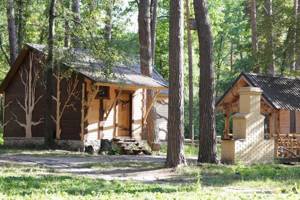
“Pearl of the Forest”
Here you can relax at minimal prices and spend time in nature with the whole family. The following services are provided:
- Fishing from the shore and by boat.
- Brazier.
- Bathhouse.
- Billiards.
- Cafe.
The cost of living ranges from 900 rubles for a summer house for two on weekdays, to 7,200 rubles for a house for 12 people. There are cottages for two, four and six guests. Separately, you can rent rooms in Turkish or Japanese style, in which case you will have to pay from 2,500 rubles per day to 4,000.
“Oblomov”
The camp site is located on the banks of the clean Usmanka River. A secluded, picturesque place to relax from the hustle and bustle of everyday life. Visitors are offered:
- Cozy gazebos.
- Brazier.
- Rent of bicycles, kayaks, scooters.
- Billiards.
- Tennis.
- Hookah.
- Banqueting hall.
Accommodation options can also be selected to suit any budget, from 1,800 rubles for an economy room for two with shared amenities to separate houses for 4 people, costing 6,400 rubles. It is worth noting that prices include breakfast.
“Torbovo”
“Torbovo” offers European-class holidays; the base is located in hunting grounds of incredible beauty. Vacationers can enjoy:
- Hunting and fishing.
- Outdoor recreation.
- Banya.
How celebrations and outdoor ceremonies are organized here, and after the hunt, for a fee, they will make you a trophy in the form of a skin rug or a stuffed head.
The cost of living depends on the comfort level of the room. A standard room for two will cost from 5,000 rubles per day, a cottage for eight will cost 30,000 rubles.
“Usmanka”
A great place to relax all year round. The camp staff can offer:
- Three baths are at guests' disposal.
- Fishing.
- Gazebos for rent.
- Courts for football, tennis and volleyball.
- Disco.
Accommodation for every taste, several types of detached cottages for ten or eight guests. You can pay for the entire house, which will cost an average of 12,000 rubles per day, or pay only for the place, approximately 1,250 per day. There are cottages with a bathhouse.
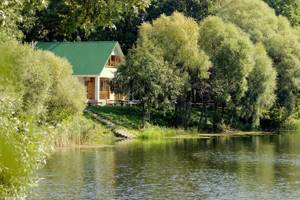
“Golden carp”
The camp site operates all year round and offers not only recreation, but also various events. Entertainment and service:
- 2 ponds for active fishing.
- Rent and rental of gear, boats, boats, bicycles, bath equipment.
- Russian bathhouse and VIP class bathhouse.
- Barbecues.
- Indoor pool.
- Paintball area.
- Horse rides.
- Billiards.
- Holding celebrations.
Accommodation at Zolotoy Sazan starts from 1,950 rubles per day per room for a stay of five days or more. You can rent not only a room or a house, but also a campsite, and even a hut.
